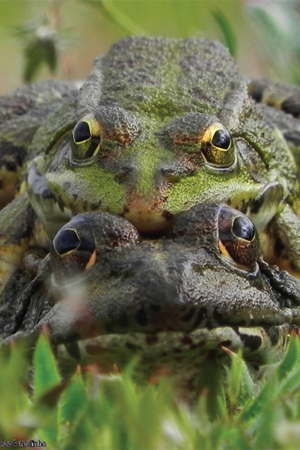
|
 |
The ancestors of amphibians were the first vertebrates to conquer land. Today most of the species still rely on water bodies for reproduction. In Portugal there are two orders of amphibians: Caudata (salamanders and newts) and Anura (toads and frogs). In the breeding season, male frogs become vocal in order to attract females. The mating ritual of caudata is silent and it is mainly through pheromones and body postures. The vast majority of amphibians have functional lungs but also breathe through the skin, making them very susceptible to drought. This requires many of them to inhabit aquatic, or at least moist environments. To survive in high temperatures, amphibians have evolved strategies to keep their skin hydrated – for example, hiding underground or in highly vegetated areas. Amphibians are globally among the most threatened of all vertebrate groups. Habitat destruction, invasive species (e.g. red swamp crawfish), global climatic changes and a pathogenic fungus (Batrachochytrium dendrobatidis) together threaten about one third of amphibian species of the world. |

|